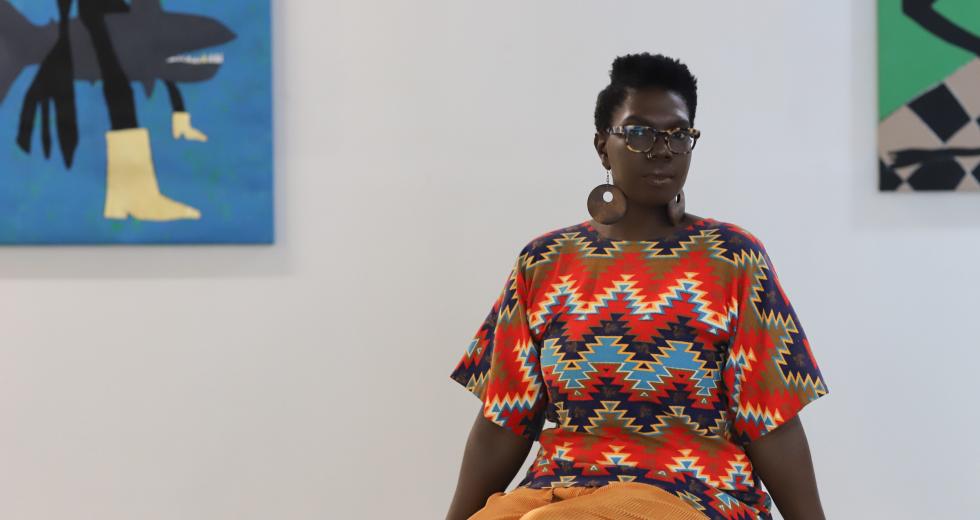Faith J. McKinnie Gallery in Sacramento, located behind the Ice Blocks in Midtown, offers a pupil-dilating glimpse into the contemporary art world. The eponymous gallerist and owner is bringing her affinity for abstract expressionism and art advocacy to her new space, which opened in August and showcases the work of artists of color, most recently Jupiter Lockett (known professionally as Jupiter the Artist) and Brandon Gastinell. “It’s about highlighting the work I want people to see,” McKinnie says.
McKinnie’s passion is twofold: She cares about helping artists build their careers and broadening the views of the public. She says because Sacramento is seen as a “safe city” when it comes to artistic style — accustomed to palatable landscapes or watercolors — she’s enjoyed infusing the city’s art scene with more diversity and “heavy abstraction.” The gallerist’s desire to diversify stems from her experience at long-running institutions like the Crocker Art Museum, where she worked as community engagement coordinator.
McKinnie’s gallery is located behind the Ice Blocks in Midtown.

“Coming from the Crocker,” she says, “I thought it was important to build our own institutions, especially contemporary art.” Driven by the social issues that punctuated 2020, she realized she’d rather build a foundation of her own than work for an institution.
Art has always been a part of McKinnie’s life, long before she studied art history at Arizona State. “My mom was an art dealer in the ‘80s and ‘90s, focusing on Black art. I remember her going to art fairs and hearing all the stories,” she says. Her foundation in Black art allowed her to see what was missing from mainstream galleries. “Going to galleries and museums, I realized there were never any of the Black artists I knew about,” she says. “I grew up knowing about all the people I knew, like Jacob Lawrence. So when I didn’t see them, I knew something was wrong with the museums.”
Using her experience in art criticism, she now writes essays about her artists’ work as a means of building their exhibition proposals, and plans to publish them on a forthcoming digital publication. “A lot of artists are like, ‘I’m telling you the significance through the paint.’ I want to help them translate that to someone who doesn’t know that language.” Adding context through the written word, she says, helps to bridge a stronger connection to the work and ultimately helps sell it.
McKinnie says she sees “deep things happening” from her gallery’s current exhibit by the Sacramento-based painter Jupiter Lockett. “That’s all I can hope for, to have some little ripple and change some lives from the work I do.”
McKinnie’s large contemporary art space is open on weekends, and
opens for a weekly “Wine Down Wednesday” event.
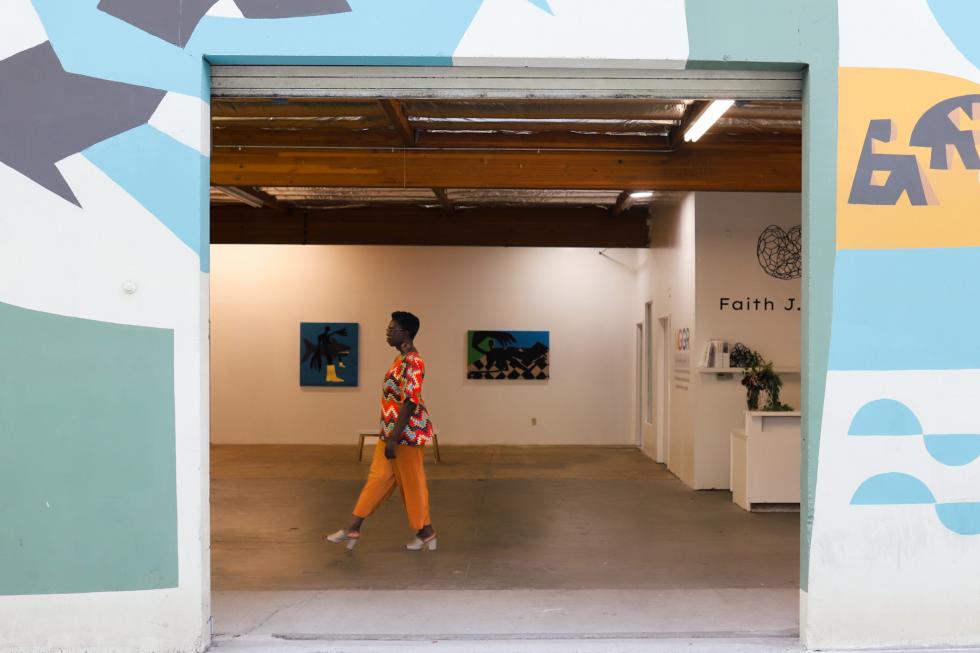
Advocating for more galleries, more solutions:
I think we don’t have enough galleries in Sacramento, and galleries are part of the infrastructure that keeps artists here. They sustain artists and thinkers. We help introduce artists to the collectors and we provide space for solo exhibition and group shows. But the more galleries we have, the more artists that will be staying here, and I really wanted to be a part of that solution. There are so many problems, so I wanted to add a solution.
A passion for abstraction:
I love abstraction. Studying in school, my favorite was the abstract expressionist movement — artists with these very gestural paintings, nonfigurative, emotion, color. I’ve always personally loved that, and it shows up in how I curate and how I do shows.
My first show was a group show about a lot of different forms. But after that, it was Joha Harrison, who’s all abstraction; Brandon Gastinell, who’s this really cool pop artist; and now Jupiter, who does abstract figures.
Making art collecting less intimidating:
I collect a lot, and try to buy art every month. I know it’s really privileged of me to talk about art like this, and not everybody has it like that, but I definitely have gone eating noodles and beans just to be able to make a down payment on someone’s piece to pay it off.
I think the term “collector” is so capitalist and (connotes) this hoarding, like, oh, I have all this art. So I think if people thought about it as you’re a curator, you’re a caretaker of the work; it represents you, and you should be able to stand by your collection.
Highlighting artists who are not white, not male, and not represented enough:
I focus on what the mainstream would consider marginalized artists. So these are Black artists, artists of color, queer identifying, trans identifying, artists with disabilities. Being a Black woman comes at many intersections.
I grew up going to galleries and museums, and I didn’t see enough people who looked like me or the people I lived around. So I’m always going to advocate for those artists that are not white and male. I work in a few different spaces, so I’m always introduced to new artists. Before I got my own gallery, I’ve always been … curating shows.
Moving outside one’s bubble toward broader inclusion:
One thing about the Sacramento community is that we have tons of artists and creatives, so I don’t have to look far. But I always say it’s really easy to criticize white collectors and say, you don’t have any people of color. But that’s their bubble. I feel like my bubble is these queer-identifying people of color. (Laughs.)
Recently, I was looking for artists, and it dawned on me that artists with visual impairments are outside of my bubble. I realized I need to get into the community where those artists are, where they’re working, so I can include them in the shows. Just like Black artists want to be included, I think there’s so many artists of different intersections that need to be included and that people need to be able to see.
Moving from curator to gallerist:
The difference between being a curator and a gallerist is being able to really stand by the work and talk with people about it. And people do have a lot of questions, especially when you get into abstraction. Not everybody is going to understand the work the same, and it’s triggering to some people. So you have to be able to really stand in for the artists and advocate for them.
Mentoring artists by building trust and a critical eye:
When I work with artists, there has to be a foundation of trust. I have to be able to trust their process and they have to be able to trust mine. That’s where my critique comes in: Sometimes there’s some critical conversation that has to happen.
That’s one thing we miss in our community. Because we do have a lot of self-taught artists, sometimes they don’t get those hundreds of hours of critique, or having to defend their work. I think we need more critique. I want my relationship with artists to not just be transactional, but more of like, okay, how do we grow from this? What are we learning? What do you want to do better next time?
A curated library to complement each show:
A self-proclaimed “book hoarder,” McKinnie shares her private
library with the public by curating a specific book selection for
each show.
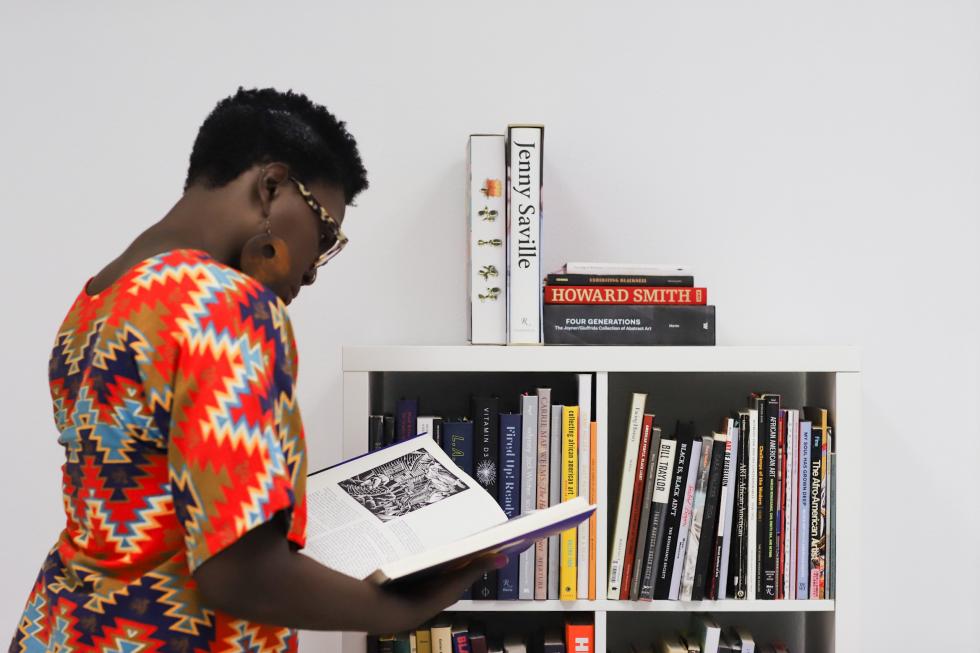
The Reading Room (a collection of over 100 art books and magazines at the gallery) is about a third of the books I have at home. I’m a total book hoarder, they’re all books I’ve read. So if you go through them, they have all my Post-its from school.
Every artist that has a show, I’ll curate a bunch of books about their work using books I already have, or I go to Amatoria, which is this amazing art bookstore in Midtown. I’ll let the artists read those books or think about those books as they’re preparing for the show. And then I’ll put those books out on display during their show.
Art’s ability to pull us through tough times:
I think art, especially during COVID, has provided some imagination. There were so many times that were like, man, how do you go on? I met a lot of artists in 2020 that were creating some really beautiful images and that inspired me, like, okay, we can get through this. Artists help us imagine something outside our current situation. And that’s really what the last two years have shown me — that artists can pull us through.
What you can expect from our current show:
It’s called NGGR (pronounced N-G-G-R), and it’s about how the white gaze distorts not only the viewer’s perception, but it can also distort the Black artist’s or the person who’s being consumed, so to speak. Jupiter’s work is semi-abstracted figures, but really plays on how we’re portraying the body. He has a ballerina that has three fingers and a really large leg. They’re really beautiful, but they’re also distorted and you know there’s something off.
McKinnie’s current show features the work of Sacramento-based
painter, Jupiter, whose semi-abstracted figures play on how the
body is portrayed.

This show really makes you question yourself as the viewer and not necessarily what you’re viewing. I’m really excited for people to hopefully take that away from the show. I’m loving the conversations we’re having in the gallery. It’s true that it’s changing people’s lives and people are walking out like, like, wow, I didn’t think about things like this.
–
Stay up to date on art and culture in the Capital Region: Subscribe to the Comstock’s newsletter today.
Recommended For You

Getting to Know: Meredith Cancilla of Quixotic Design Co.
Meredith Cancilla has made it her business to build up
women-owned brands.
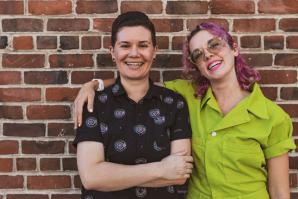
Getting to Know: Shahera Hyatt and Melissa McGillicuddy
Melissa McGillicuddy and Shahera Hyatt are hosts and
comedians of the Moving Van Show, a comedy show based out of
a rented U-Haul.
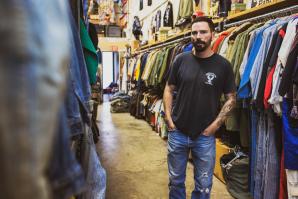
Getting to Know: Chris Bond
Tucked into a Tahoe Park warehouse is Spiders Garage, a
wonderland of vintage clothing collected and sourced by owner
Chris Bond.
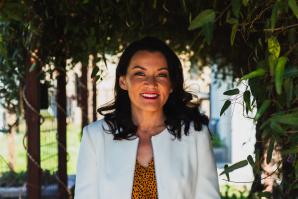
Getting to Know: Vicki Gonzalez
New host of CapRadio's ‘Insight’ on having the ‘best gig’ in Sacramento
Vicki Gonzalez brings 15 years of news reporting experience and a
multicultural point of view to her new role as host of “Insight,”
CapRadio’s one-hour morning radio program covering the Sacramento
region’s issues and events.



